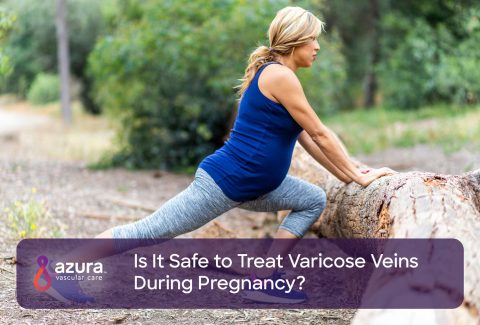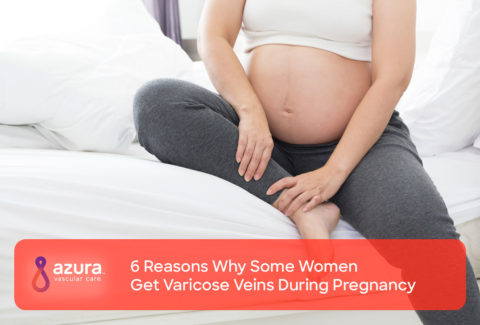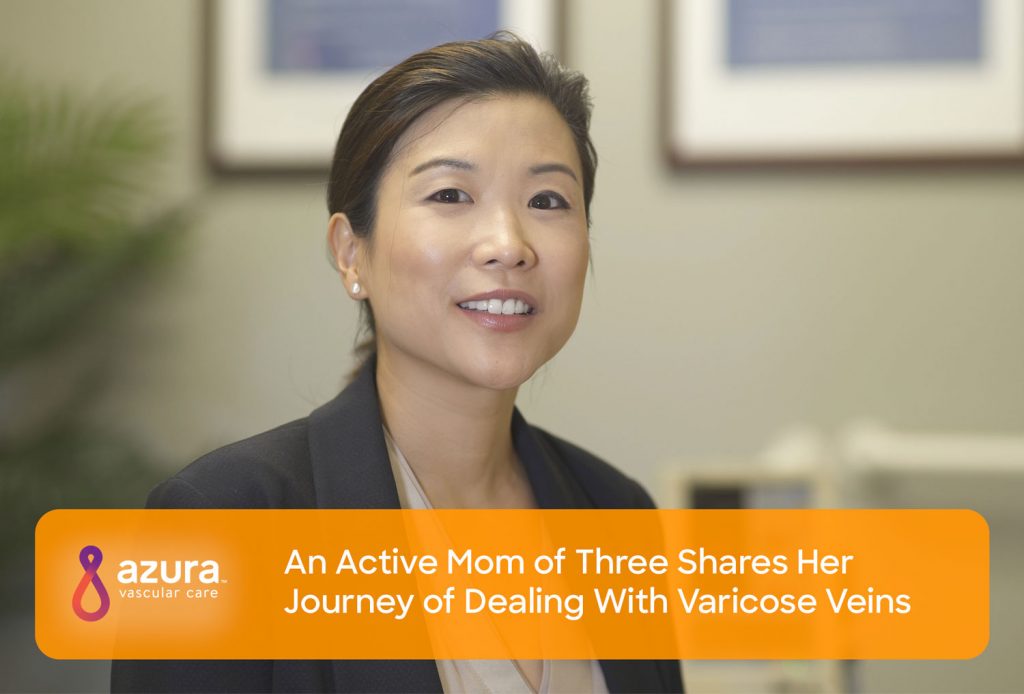
“I was tired of the pain and embarrassment of my worsening varicose veins.”
An active mom of three shares her journey of dealing with varicose veins that appeared after her latter pregnancies and her decision to seek effective treatment.
Sandy A., 46, is a mother of three who exercises regularly, eats nutritious foods and maintains a healthy weight. “Every day that I can, I exercise. I’ve been like that my whole life”. Despite being physically active and practicing healthy habits, Sandy has a history of vein problems. Her vein issues were aggravated by multiple pregnancies and resulted in painful, unsightly varicose veins that affected her lifestyle.
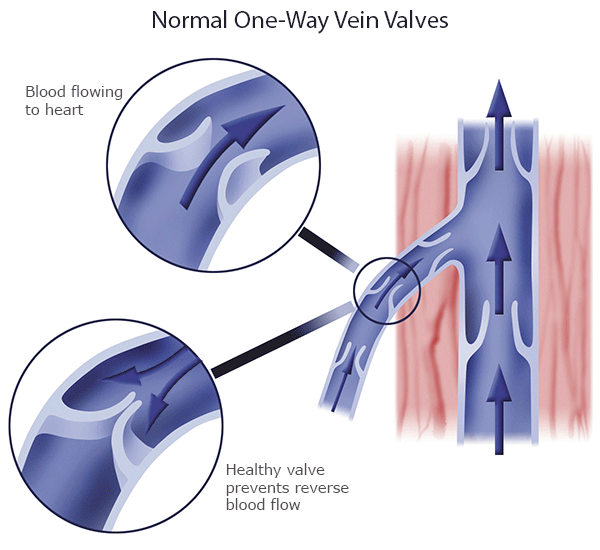
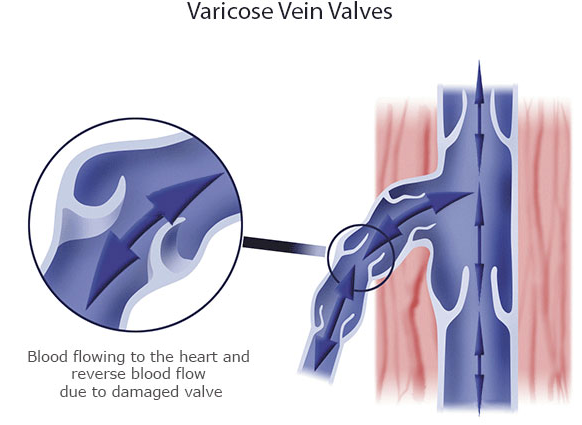
The first encounter with varicose veins
When Sandy first noticed her varicose veins, she was 31 years old and eight-months pregnant with her second child. She had felt soreness at the back of her right knee when she gently touched behind it. “It felt like I was hit there.” When she mentioned this to her OB/GYN, she was told that varicose veins are common during pregnancy and that there is often relief after giving birth.
After the pregnancy, the pain and swelling of the veins behind her knee disappeared; however, small spider veins appeared in the lower part of her leg. Since the pain went away and the condition didn’t worsen, Sandy wasn’t concerned and did not seek treatment.
A third pregnancy brought about onset of bulging, painful veins
It wasn’t until the fourth month of her third pregnancy at age 37 that Sandy experienced painful, bulging varicose veins. She noticed bluish-green veins close to the surface of her skin on the same leg that she had seen varicose veins during her second pregnancy. This time she also noticed ropey, bulging veins in her groin and above as well as behind the right knee. “I remember wearing a skirt and my girlfriend said, ‘I feel so sorry for you.’ You could see swelling and so many ropey veins,” recalled Sandy.
In addition to the unsightly appearance, Sandy felt heaviness and pain in her groin and slight twinges behind the knee that grew intense if touched. When her young children grabbed her legs for a hug, it was excruciating.
As her pregnancy progressed into the summertime, she started to wear an open-toed support hose while taking her children to the pool, park, parties and more. She needed the support hose to help relieve the pain and pressure she was feeling. Towards the end of the pregnancy, the pain worsened, and she began to wear the support hose nearly all day long, including during sleep. When getting out of bed in the morning, she had to prepare herself by bracing for the pain when she stood up.
Within 48 hours of the birth of her third child, Sandy’s bulging varicose veins became smaller and after two weeks, there was a fifty percent improvement. She didn’t have to wear the support hose as often, but the pain was still there. Sandy knew that she had to address her varicose veins and symptoms, but with a newborn and two young children, she decided to delay seeking treatment.
A year later, the varicose veins never disappeared as they did after her second pregnancy and she continued to experience pain, heaviness and swelling in her right leg. She also now felt symptoms in her left leg. Sandy realized it was time to seek treatment.
Navigating the course of varicose veins treatment
Sandy researched online to better understand the causes of varicose veins and treatment options. At the recommendation of a family friend, she met with Dr. Elsie Koh at Azura Vascular Care Woodland Park for a consultation.
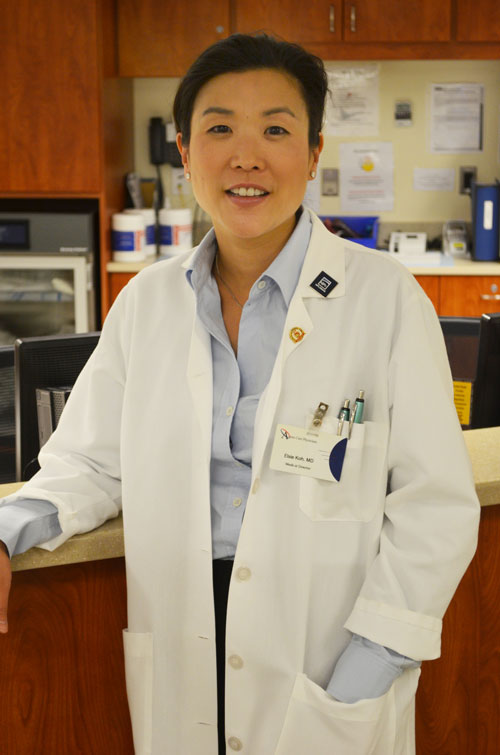
Dr. Koh reviewed Sandy’s symptoms and measured the size of her veins. Sandy learned from Dr. Koh that before receiving treatment for symptomatic varicose veins, most insurance companies require patients to first wear prescribed compression stockings, a non-invasive treatment, before authorizing coverage for another type of vein treatment.
If compression stockings don’t provide results, then the insurance company typically agrees to pay for treatment. The length of time that insurance companies require a patient to wear stockings varies. In Sandy’s case, it was three months.
Despite wearing the compression stockings for the required length of time, there were no signs of improvement after the three-month period. Based on these findings, Dr. Koh presented a minimally invasive approach to treating the varicose veins in Sandy’s right leg.
Sandy underwent laser ablation, a minimally invasive varicose veins treatment, approximately six months after her initial consultation with Dr. Koh. The procedure took only 30 to 45 minutes. Afterward, Sandy’s leg was bandaged in gauze over the treated areas, followed by compression stockings.
- Do not shower for 48 hours – keep the bandages and compression stockings dry.
- Get up every hour to move around to help improve blood flow and reduce risk of blood clots.
- When sedentary, elevate your legs to reduce swelling.
- After the first day, begin walking every day for at least 30 minutes (no weight lifting, running or cycling for the first month).
- Abstain from lifting anything over 20 pounds for the first week.
- Wear compression stockings daily for the first two weeks; they may be removed at bedtime.
- For one month, do not travel via air or ground for more than two hours.
- Avoid exposure to the sun.
Sandy was not permitted to lift anything heavier than 20 pounds during that first week of recovery. Imagine how difficult that must be for a woman with three young children! She was told not do any other exercise than walking for the first month after the procedure. Air travel and long-distance travel of more than two hours was off limits for the first month.
Sandy’s bruising healed within four to eight weeks and she was relieved of any pain and other symptoms related to the varicose veins.
Staying on top of vein problems
Sandy continues to experience vein problems and stays on top of them by getting treated promptly. Venous disease is a progressive disorder that can lead to worsening symptoms and complications—and is unique to each person. Sandy is very aware of her vein condition and is cautious when flying on planes and taking long car rides. She’s careful about not remaining sedentary for too long without standing and walking around. When traveling, she gets up at least once an hour and while sitting, she places a box under her feet so that they are slightly elevated. To Sandy, it’s a maintenance thing.
“If you have vein problems, it’s important to seek prompt treatment at the onset of symptoms because they only get worse. Dr. Koh is very experienced and I feel very comfortable in her hands,” added Sandy.
If you experience symptoms such as bulging veins or swelling, pain, heaviness or bruising in the legs, it’s important to talk to a vascular specialist such as an interventional radiologist or vascular surgeon.
“Since my initial treatment, I have referred three people to Dr. Koh. She’s excellent,” declared Sandy.
Don’t trust your legs to a vein clinic. Talk to a vascular specialist!
Call 844-832-VEIN (8346) to set up a consultation with a vascular specialist at Azura Vascular Care & discuss how to treat your varicose veins effectively. Treatments are minimally invasive and performed safely in an outpatient setting.


